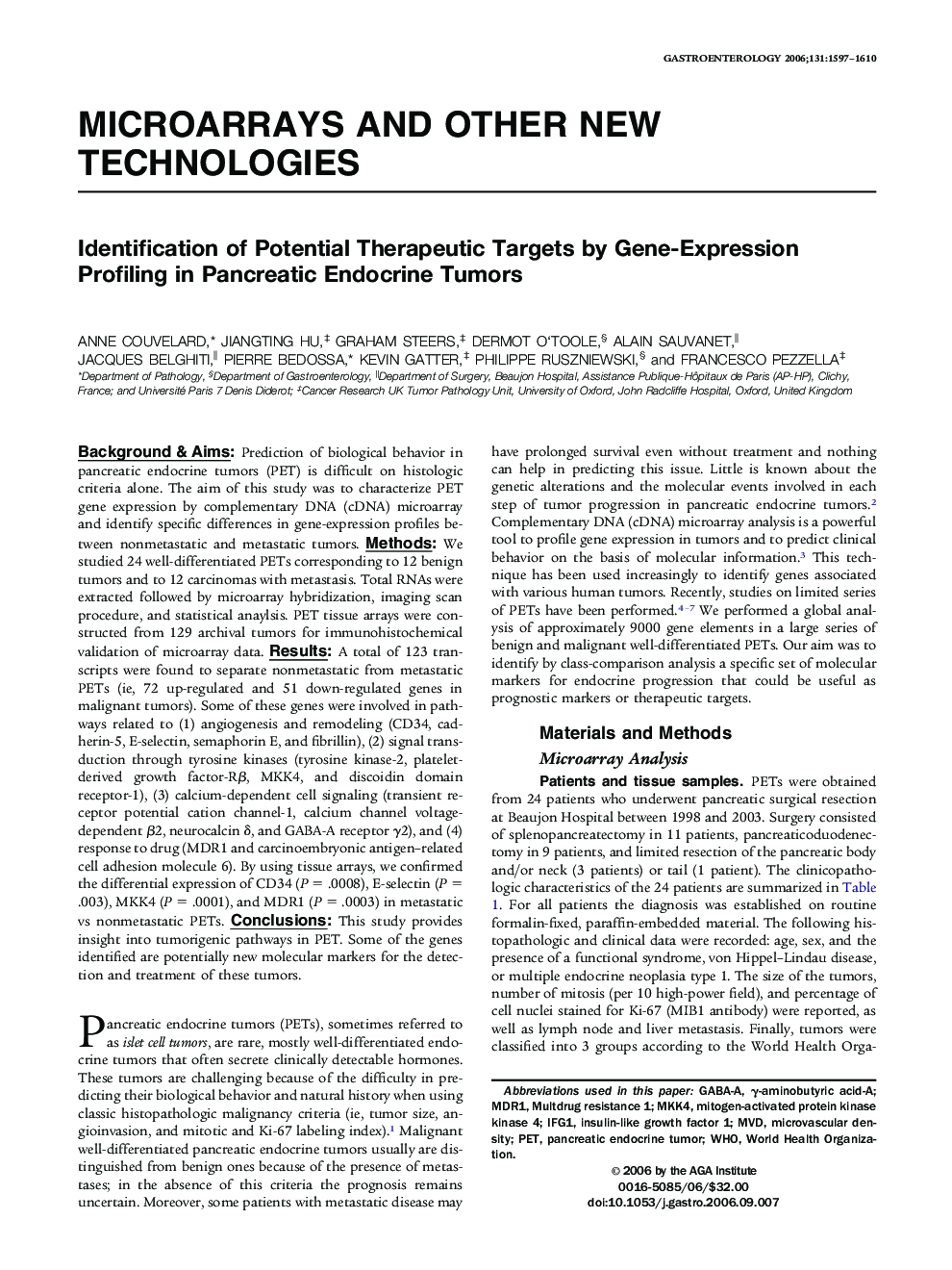| Article ID | Journal | Published Year | Pages | File Type |
|---|---|---|---|---|
| 3299811 | Gastroenterology | 2006 | 14 Pages |
Abstract
Background & Aims: Prediction of biological behavior in pancreatic endocrine tumors (PET) is difficult on histologic criteria alone. The aim of this study was to characterize PET gene expression by complementary DNA (cDNA) microarray and identify specific differences in gene-expression profiles between nonmetastatic and metastatic tumors. Methods: We studied 24 well-differentiated PETs corresponding to 12 benign tumors and to 12 carcinomas with metastasis. Total RNAs were extracted followed by microarray hybridization, imaging scan procedure, and statistical anaylsis. PET tissue arrays were constructed from 129 archival tumors for immunohistochemical validation of microarray data. Results: A total of 123 transcripts were found to separate nonmetastatic from metastatic PETs (ie, 72 up-regulated and 51 down-regulated genes in malignant tumors). Some of these genes were involved in pathways related to (1) angiogenesis and remodeling (CD34, cadherin-5, E-selectin, semaphorin E, and fibrillin), (2) signal transduction through tyrosine kinases (tyrosine kinase-2, platelet-derived growth factor-Rβ, MKK4, and discoidin domain receptor-1), (3) calcium-dependent cell signaling (transient receptor potential cation channel-1, calcium channel voltage-dependent β2, neurocalcin δ, and GABA-A receptor γ2), and (4) response to drug (MDR1 and carcinoembryonic antigen-related cell adhesion molecule 6). By using tissue arrays, we confirmed the differential expression of CD34 (P = .0008), E-selectin (P = .003), MKK4 (P = .0001), and MDR1 (P = .0003) in metastatic vs nonmetastatic PETs. Conclusions: This study provides insight into tumorigenic pathways in PET. Some of the genes identified are potentially new molecular markers for the detection and treatment of these tumors.
Keywords
Related Topics
Health Sciences
Medicine and Dentistry
Gastroenterology
Authors
Anne Couvelard, Jiangting Hu, Graham Steers, Dermot O'Toole, Alain Sauvanet, Jacques Belghiti, Pierre Bedossa, Kevin Gatter, Philippe Ruszniewski, Francesco Pezzella,
